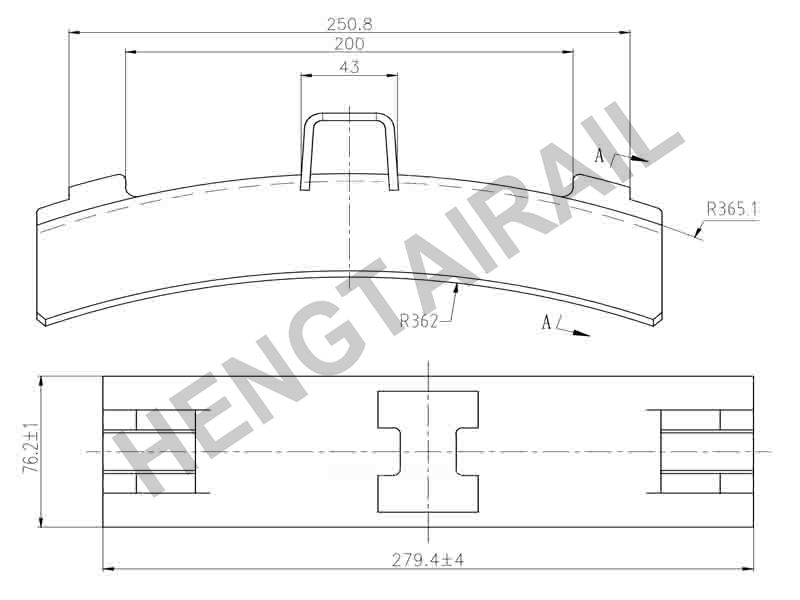The brake block is the braking part directly acts onto the wheel to reduce the train speed or stop the train during operation. At present, the brake block could be classified into three types according to its material, they are cast iron brake block, composite brake block, and sinter brake block.
Cast iron brake block is mainly applied to freight wagon nowadays.
Composite brake block is mainly applied to passenger coaches, and freight wagon.
Sinter brake block is mainly applied to locomotive nowadays.
Generally, the composite brake block is a composite material made of resin, rubber, etc. as the main raw materials, mixed with mineral products, metals, graphite, etc. after being pressurized and heated.
Specifications:
| Material | Composite, cast iron, gray cat iron |
| Inspection | Domestic or Appointed |
| Braking Force | 1. High friction |
| 2. Low friction | |
| Density g/cm³ | Not more than ± 5% |
| Rockwell hardness HRR | 55 ~ 100 |
| Impact strength kJ/m² | ≥ 1.8 |
| Compression strength MPa | ≥ 25 |
| Compression modulus MPa | ≤ 1.5×10³ |
| Speed | Using for 80-120km/h |
| Application | Railway locomotive, railway wagon, passenger car ect. |
Allowable range of average friction coefficient of low friction brake shoe(applied force on break shoes K=80kN)
| Initial braking speed (km/h) | 40 | 60 | 80 | 100 | 120 |
| Average friction coefficient | 0.15±0.04 | 0.14±0.04 | 0.13±0.04 | 0.125±0.04 | 0.12±0.04 |
Allowable range of average friction coefficient of high friction brake shoe(applied force on break shoes K=34kN)
| Initial braking speed (km/h) | 40 | 60 | 80 | 100 | 120 |
| Average friction coefficient | 0.31±0.04 | 0.30±0.04 | 0.29±0.04 | 0.285±0.04 | 0.28±0.04 |
Features:
1. Composite friction material bearing high energy braking;
2. High coefficient of friction and stability;
3. Small heat fade for coefficient of friction;
4. Temperature insensitiveness;
5. Develop according to the samples or drawings;
6. With quality certification.
| Average Friction Coefficient | 0.20 ± 0.04 |
| Wear Amout | ≤120 x 10-3 mm |
| Impact Strength | ≥2.0 kgf/cm2 |
| Compressive Strength | ≥ 500 kgf/cm2 |



















